It started with two wonderful bunches of alstromerias (“Peruvian Lilies”), one purple and one yellow. On the alstromeria flower, the blossoms have exterior petals that are mostly solid colors (e.g., somewhat translucent, but without markings). In addition, there are usually three interior petals on each blossom that are mostly “tiger striped”—and great for transparency on the light box. You can get a good close-up look at both kinds of alstromeria petals in another of my blog stories.
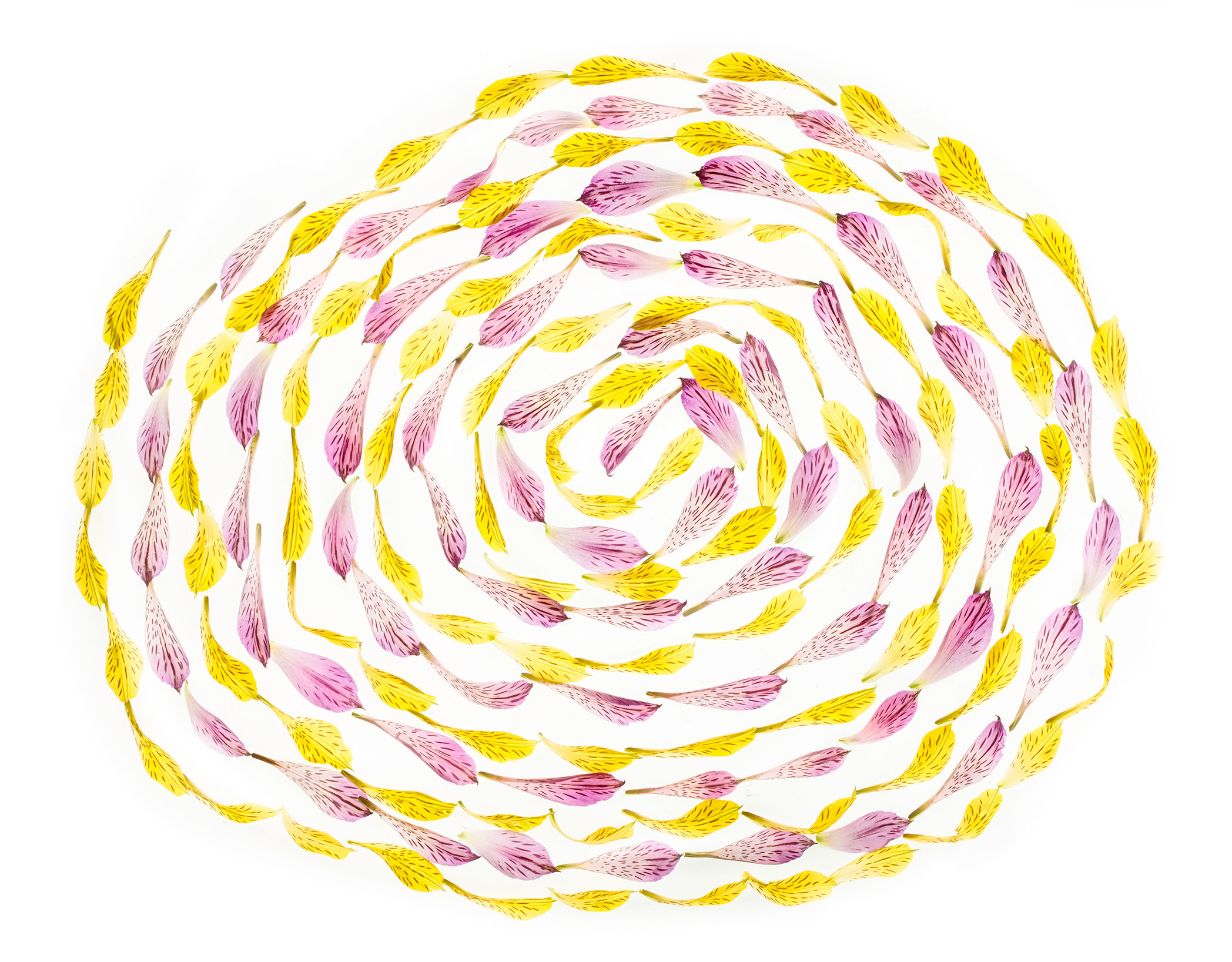
After we’d enjoyed the flowers for a while, I decided to use the interior, tiger-striped petals to make a pattern. My idea was to create two concentric spirals, one from the purple petals, and one from the yellow petals.
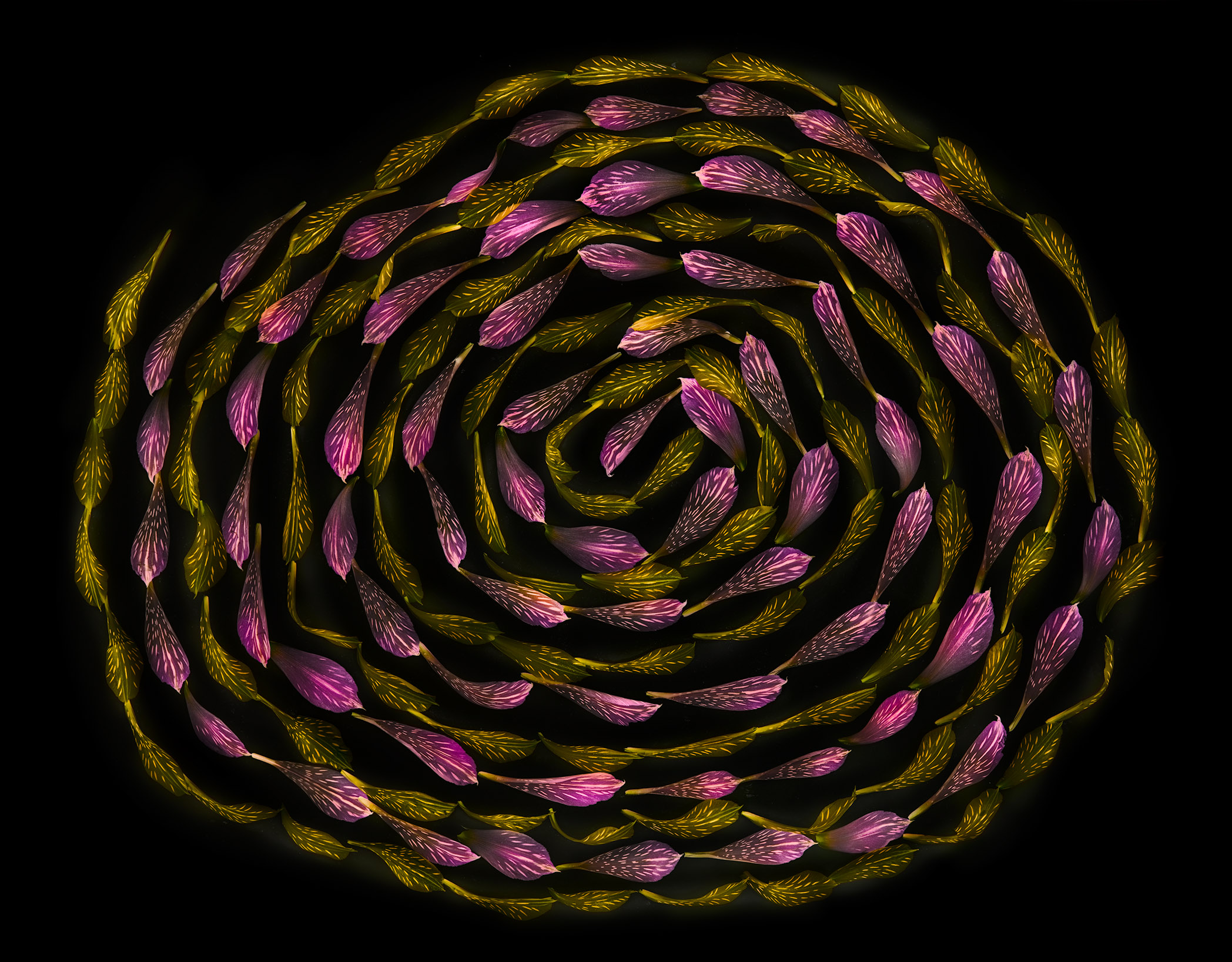
This is a design that is somewhat maze-like in nature, and I have been drawing this double spiral as long as I can remember (essentially, this is a floral version of the doodle that got me through the boredom of law school many years ago!). The finished version, depending on how you look at things (and I have heard all of these by now), can be a maze, the spiral galaxy, a school of fish, human spermatozoa, a giant’s fingerprint—or even (in the school of a pipe sometimes just being a pipe!)—flower petals.
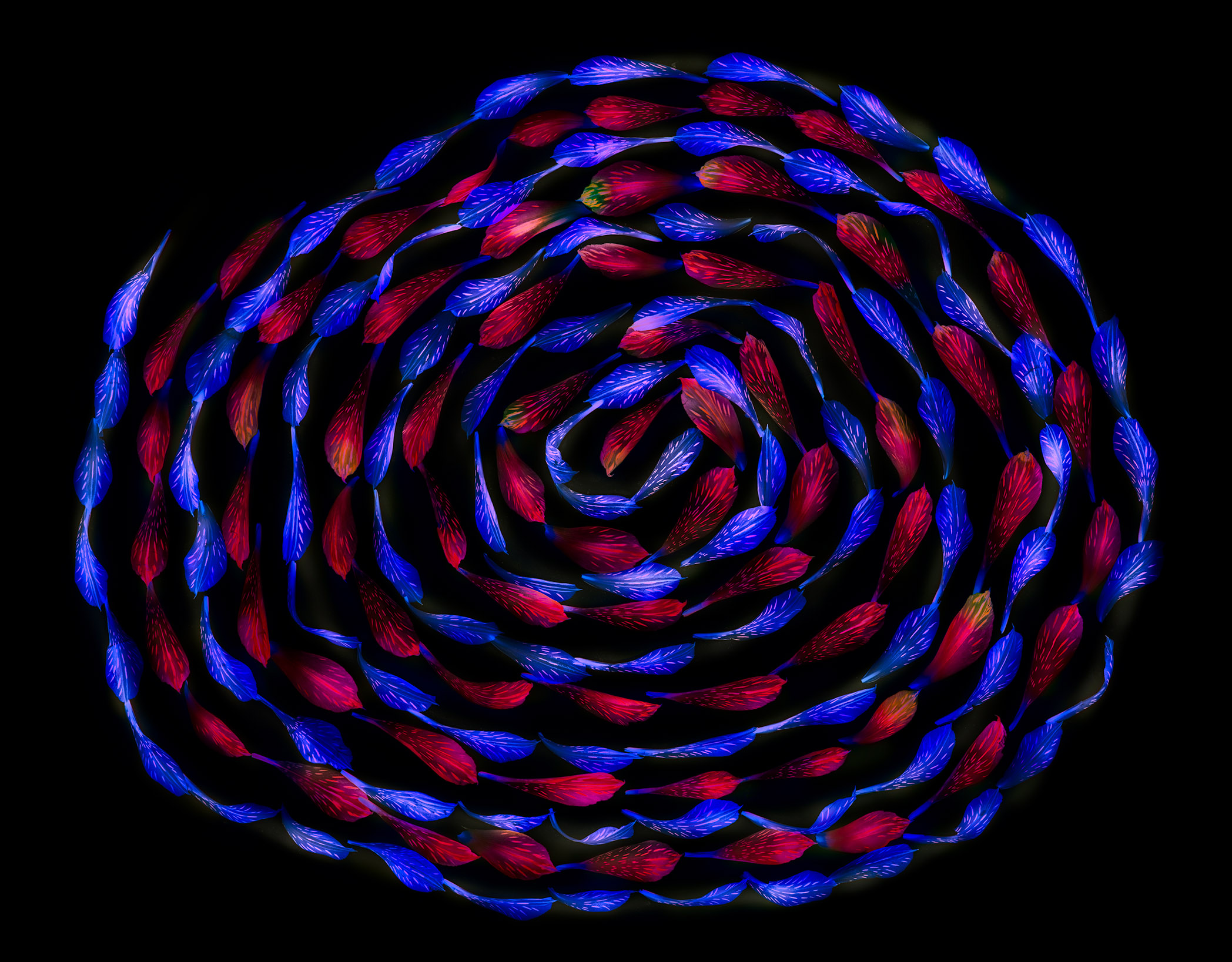
With the version on white (shown at the top of this story) I thought I was done, but of course, for the wicked as for the artist, there is never any rest! No, I in truth I am not seriously wicked. Alas, as much as I might like to be a Tom Petty and the Heartbreakers “bad boy” I am probably not wicked at all.
I had great fun inverting the original image in LAB color in Photoshop, creating a straight “translation” of whites to black and blacks to white (the “straight” LAB inversion is the first A Simple Twist of Fate image above).
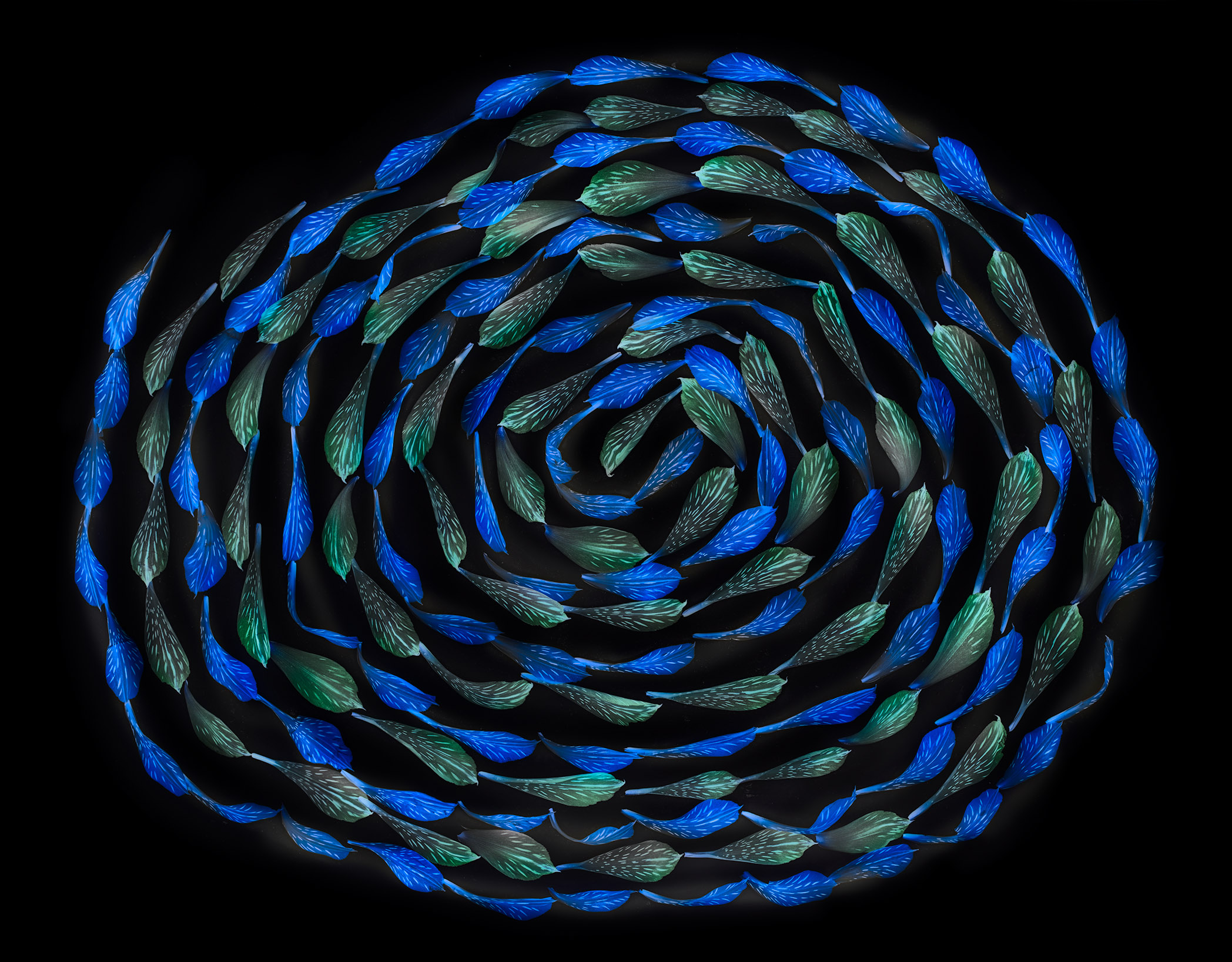
Looking at the simple inversion, I immediately I thought of Paul Klee, and color field painters such as Kenneth Noland and Larry Poons from the 1960s. This made me feel impelled to have fun with more complex LAB manipulations, shown here with a black background.
As you can see, it all started with a flower petal, and ended in a simple twist of fate! Of course, the intermediate steps required a certain delicacy in handling and “drawing” with flower petals, not to mention expertise in high-key HDR photography, Photoshop workflow, and creative uses of LAB.
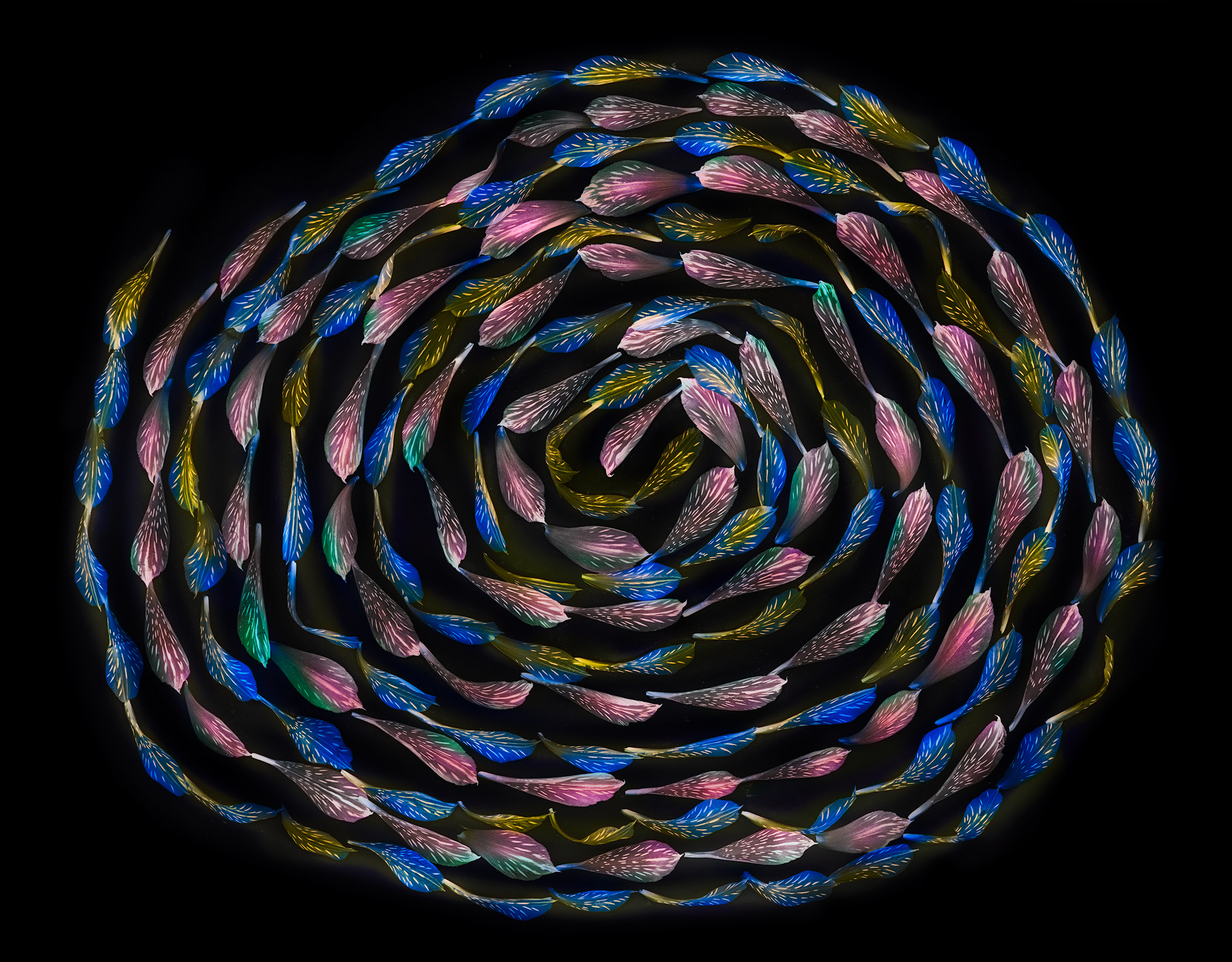
Which version is your favorite (and how twisted is fate?)?
I am looking forward to printing these six images as an ensemble. A very special thanks (and a very deep discount) to any of my collectors (or a new collector) who would like to place an advance order for one of these prints—or, better yet, for the suite of all six prints (contact me to discuss, or if interested, for details of this offer)!
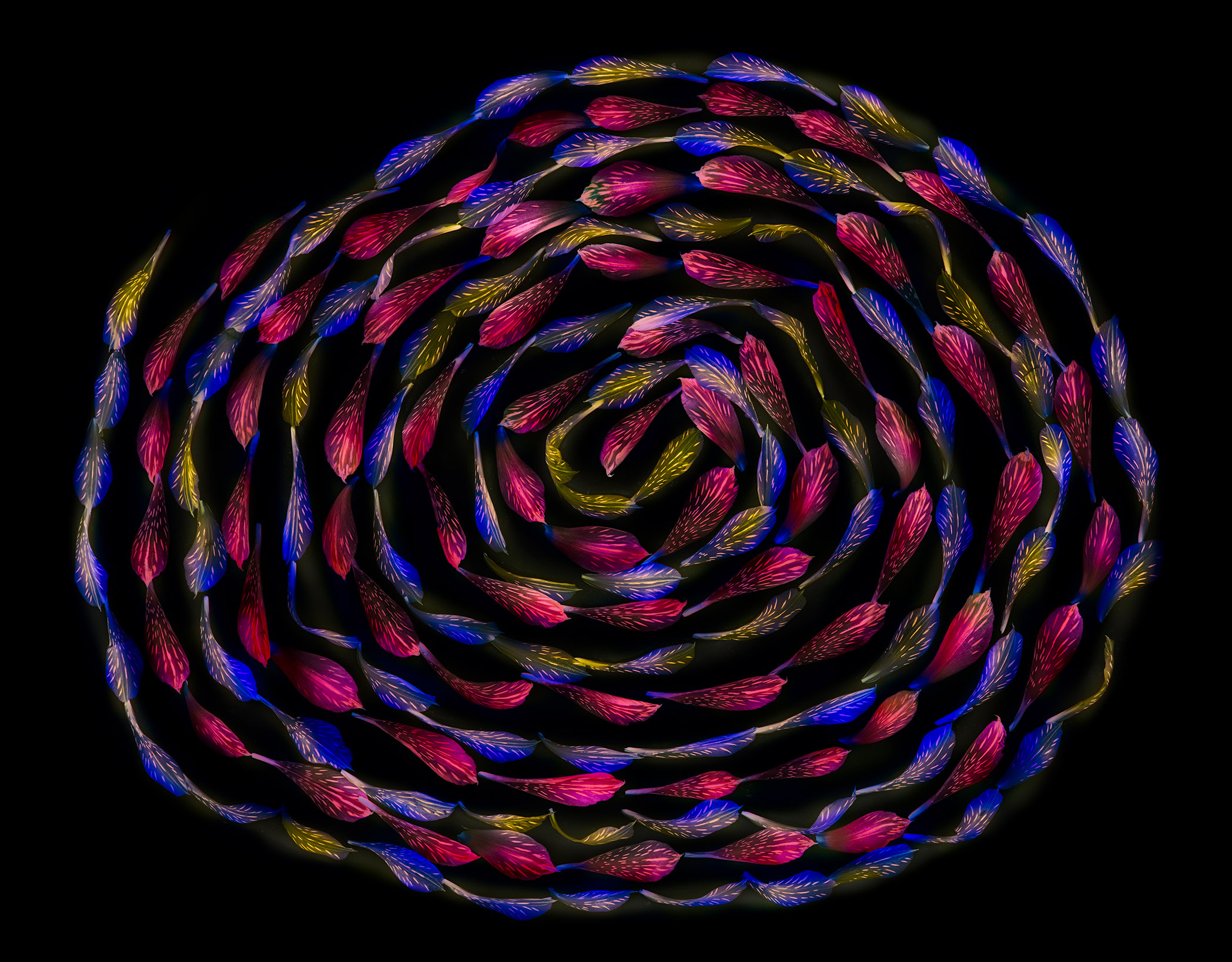
Pingback: Constructing an image from the materials of nature
Pingback: Harold Davis | Constructing an image from the materials of nature – Exploring Colour
SImone Foedrowitz
14 Nov 2017That’s a really special! I love the way to create something new. And my favourite is the last one, because it has much power! Simone
Pingback: Harold Davis—My Best of 2017